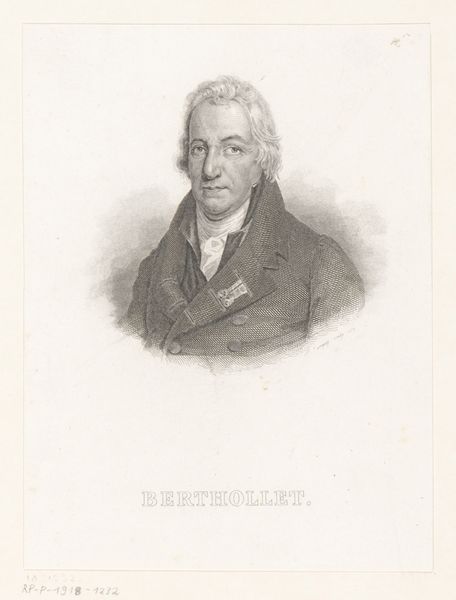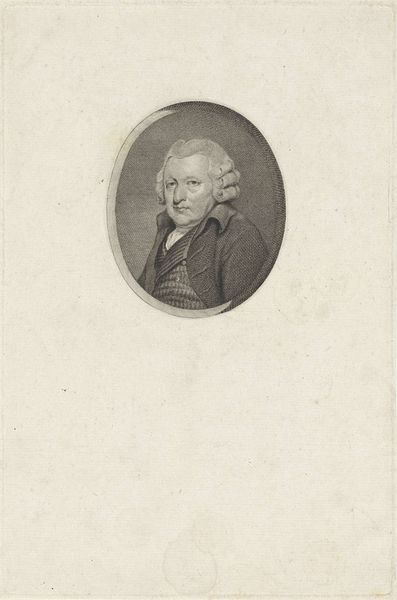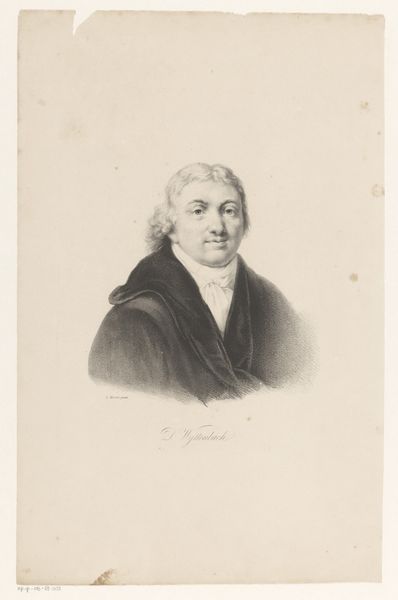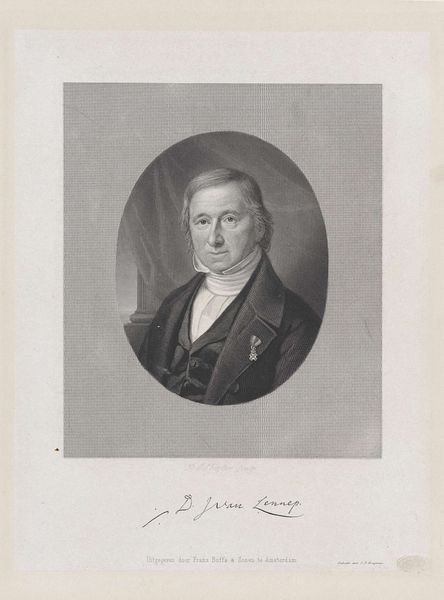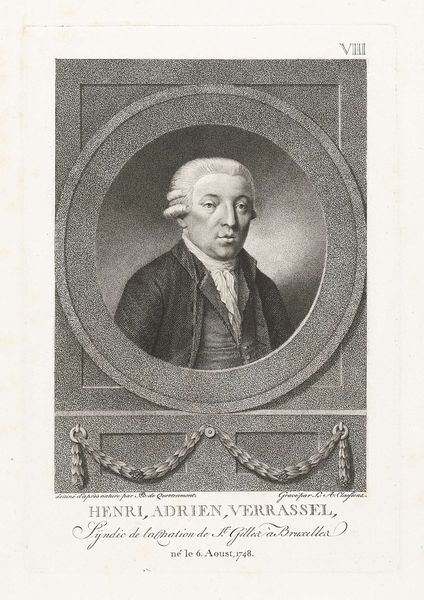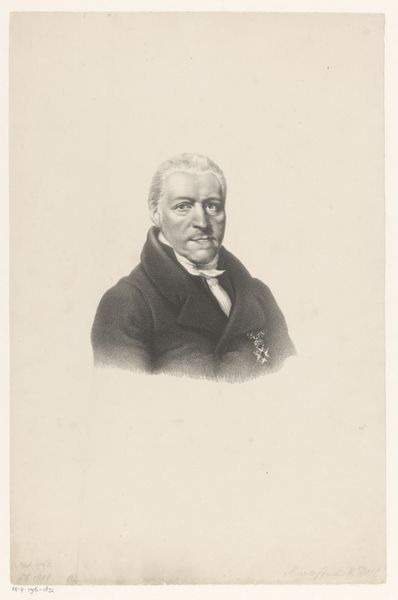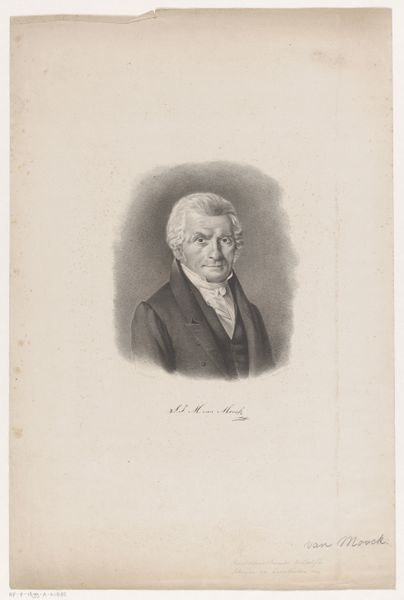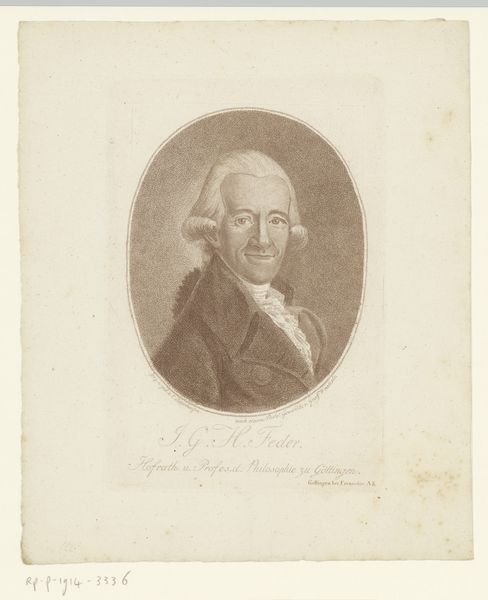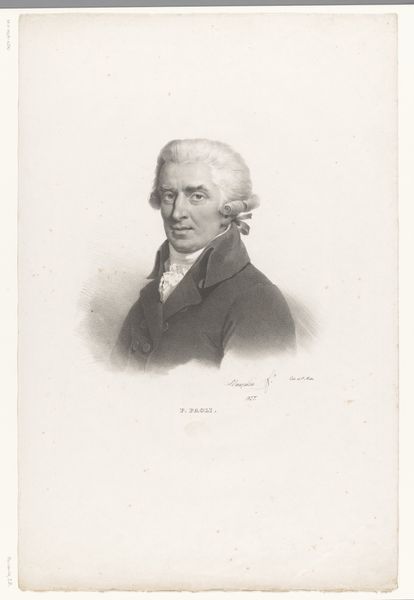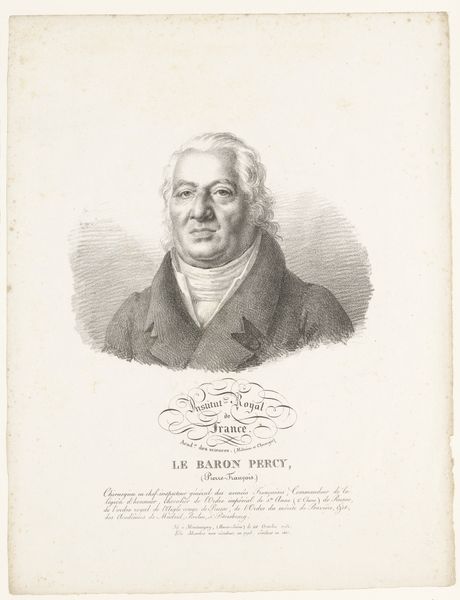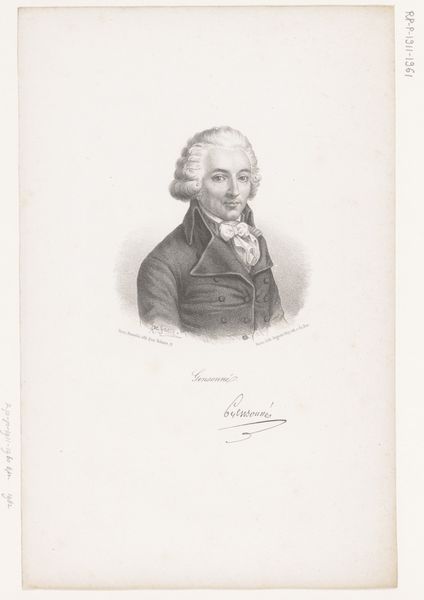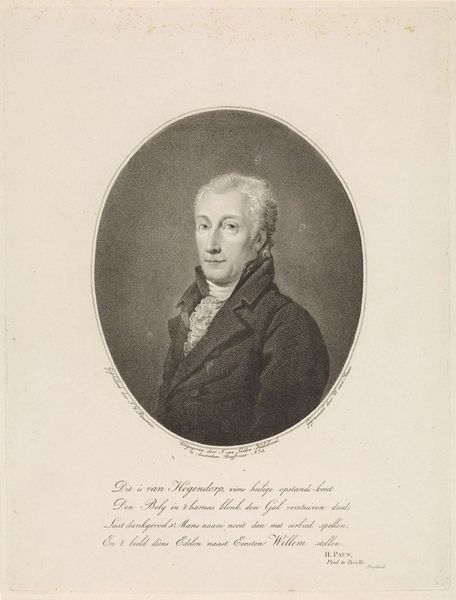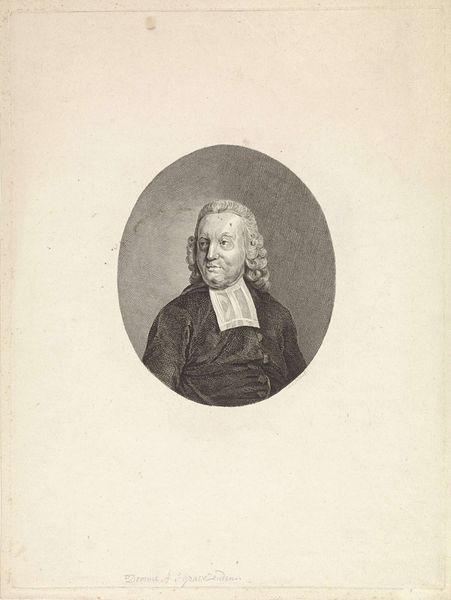
Portret van Johannes Hendricus van der Palm 1826 - 1830
0:00
0:00
frederikchristiaanbierweiler
Rijksmuseum
#
pencil drawn
#
light pencil work
#
photo restoration
#
pencil sketch
#
old engraving style
#
historical photography
#
portrait reference
#
pencil drawing
#
limited contrast and shading
#
pencil work
Dimensions: height 267 mm, width 175 mm
Copyright: Rijks Museum: Open Domain
Editor: Here we have a portrait of Johannes Hendricus van der Palm, made sometime between 1826 and 1830 by Frederik Christiaan Bierweiler. It's a delicate piece, a pencil drawing with very fine lines. It almost has the effect of an engraving. What do you see when you look at it? Curator: I see a meticulously crafted object reflecting the rise of print culture and its democratization of representation. Consider the material conditions: pencil and paper, relatively inexpensive and readily available, allowed for a wider accessibility to portraiture beyond the wealthy elite who could commission oil paintings. The artist becomes a skilled craftsman, deploying labor to reproduce likeness. Editor: So, it's less about capturing the sitter's soul, and more about the technical process? Curator: Precisely. The "soul," as you put it, becomes secondary to the skill of reproduction. Think about the context: the increasing mechanization of society. Hand-drawn portraits like these occupy a fascinating space between artisanal craft and mass production. It invites us to analyze not just the image, but the entire system of production and distribution that makes it possible. What class of person would consume a portrait such as this, and for what means would this consumption convey material social value? Editor: That's fascinating, looking at it in terms of the materials and how they were used to create the image, rather than just seeing the subject of the portrait. Curator: Exactly. And, consider how the labor involved differs greatly from painting; the artist uses controlled movements and careful applications of specific media on paper. Editor: It shifts the focus from the individual to the broader cultural landscape. Curator: Indeed. By questioning the relationship between artist, artwork, and audience within a particular material and economic context, we begin to unlock a more comprehensive understanding of art history.
Comments
No comments
Be the first to comment and join the conversation on the ultimate creative platform.
